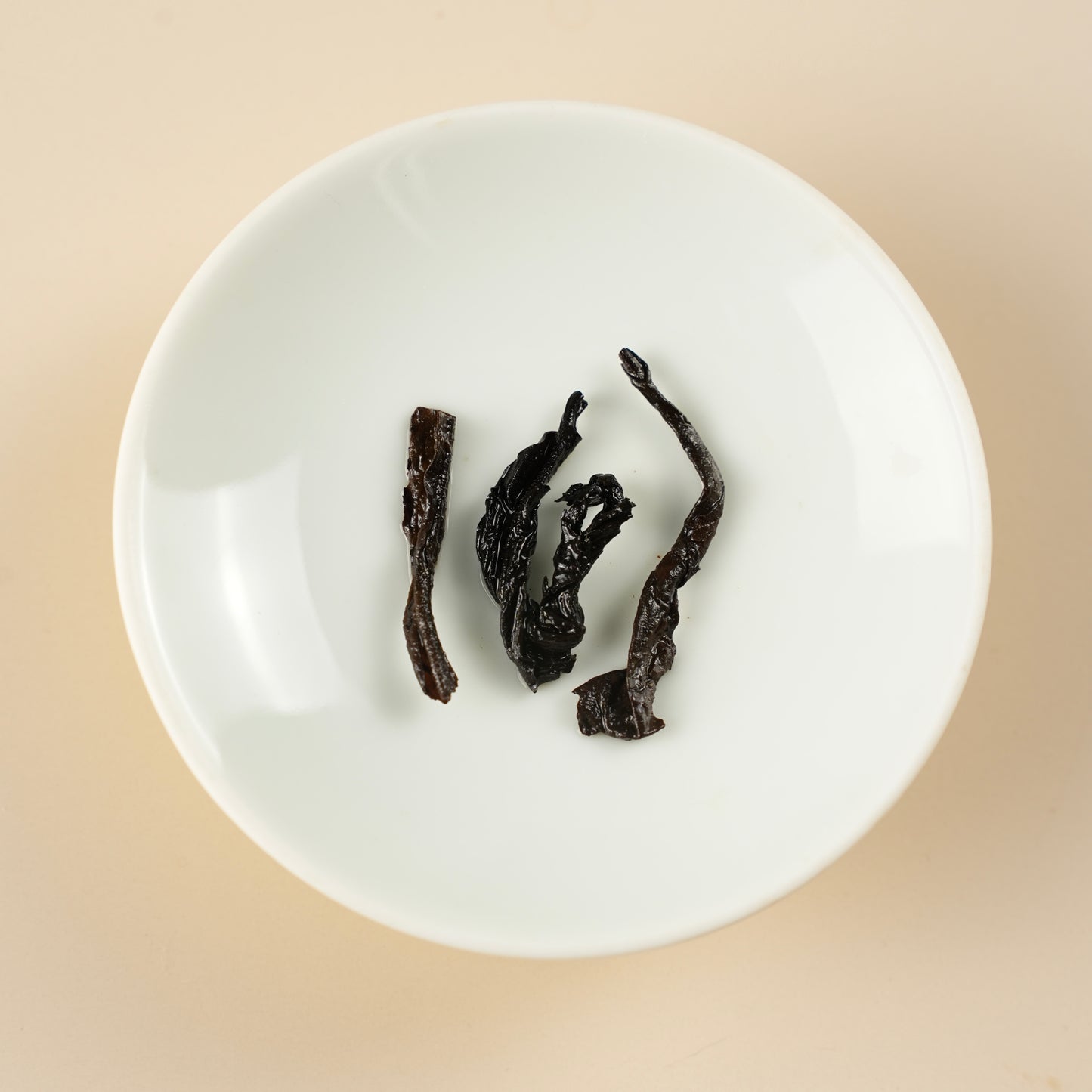Shou Puerh Aged 10 Years
Shou Puerh Aged 10 Years
Our Ten-Year Aged Ripe Pu’er is slowly matured to develop its rich, soothing depth. With no bitterness or harsh edge, it brews into a smooth, full-bodied cup carrying warm notes of aged wood and gentle earthiness—perfect for moments of calm and reflection.
Tasting Notes:
Aged wood · Earthy sweetness · Smooth finish
Couldn't load pickup availability





Tea Details
Harvest: Spring 2015
Region: Menghai, Xishuangbanna, Yunnan, China
Elevation: 1200 – 1500 m
Cultivar: Yunnan Da Ye Zhong (large-leaf variety)
Crafting Method: Sun-dried Maocha + Wo Dui (fermentation)
Storage Tips: Store in an airtight container, away from heat, light, and strong odors.
Shelf Life: Can be safely aged for 20 years or longer under proper storage conditions.
Net Weight: 30 g / 1.06 oz

Yunnan Da Ye Zhong
Yunnan Da Ye Zhong (literally “Large-Leaf Variety from Yunnan”) is one of China’s oldest and most prized tea cultivars. Grown mainly in the misty mountains of southern Yunnan, its broad, thick leaves are rich in polyphenols and amino acids — perfect for fermentation and long-term aging.

The Wo Dui Process
Ripe Pu’er (Shou Puerh) begins its journey with sun-drying, a traditional technique that preserves the living enzymes and native microbes within the tea leaves.
After the fresh leaves are pan-fixed and gently rolled, they are spread thinly under the sun for one to two days — long enough for the moisture to drop naturally, yet slow enough to retain the leaf’s vitality and aroma.
This careful sun-drying step lays the foundation for later fermentation, giving the tea its aging potential and signature depth.

The Wo Dui Process
During Wo Dui (controlled pile fermentation), fresh sun-dried leaves undergo a warm and humid transformation lasting 45–60 days.
Microbial activity and oxidation gradually convert the tea’s catechins into theaflavins, thearubigins, and theabrownins — compounds responsible for the rich red color and mellow flavor of ripe Pu’er.
Meanwhile, amino acids and sugars combine through gentle heat reactions to produce the tea’s signature sweet, smooth, and earthy character.






